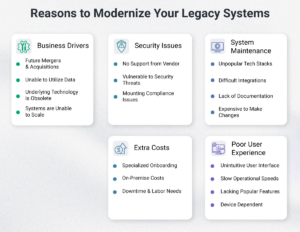
Executive Summary
The institutional FX market is evolving at a rapid pace. World events like the Covid pandemic and the Russia-Ukraine war have led to worldwide supply chain shortages pushing inflation to unprecedented levels in major economies. Central banks are responding by adjusting the interest rates, which has a knock-on effect on FX demand and supply dynamics, causing market volatility spikes. Apart from these macroeconomic changes, an ever-increasing regulatory ask, an explosion of data and its technological ramifications on the trading infrastructure are threatening the status quo of the traditional FX marketplace. The writing is pretty much on the wall – traditional FX ecosystems are undergoing a swift changeover, and the participants who do not act in time to adapt to the changing order will have their clocks cleaned.
In this paper, we first highlight some key trends evolving in the FX value chains due to the changing dynamics of the FX marketplace. Then we list down a few opportunities these trends open for the different FX participants that may help them navigate through these turbulent times with flying colors.
Growth in FX Trading Volumes (Avg. Daily Volumes) in the last two decades
2004 – 1.94 trillion $
2007 – 3.33 trillion $
2010 – 3.98 trillion $
2013 – 5.36 trillion $
2016 – 5.07 trillion $
2019 – 6.59 trillion $
2022 – 7.51 trillion $
Trends
Macroeconomics
The FX volumes continue to pile. The global FX turnover continued its upswing and reached a staggering $ 7.5 trillion per day in 2022, up 14% from 2019. It stands approximately equal to one-third of the estimated annual GDP of the USA in 2023.
Volatility makes a comeback. Volatility and turbulence in FX markets have made an uptick since the last year due to multiple disruptive macroeconomic events and hawkish interest rate policies adopted by countries to counter their economic impact.
Market Structure
Rapid evolution of FX clearing. Traditional pure “OTC” play in FX markets is being challenged as cleared workflows are gaining traction due to regulatory demands of minimizing bilateral credit exposure (as per the UMR and SA-CCR directives). The Cleared FX volumes (especially NDF “Non-deliverable forward” clearing) show a distinct rise1,3. The volumes may increase further, spurred by the buy side demand and adoption of new, innovative product offerings (like Blocks4, Exchange for Physicals5) by various exchanges like CME and Eurex.
Further fragmentation of liquidity pools is on the cards. FX trading seems to be moving away from multilateral platforms towards private, bilateral methods (ex. via single dealer platforms, via client portals or direct trading) as per the latest BIS 2022 triennial survey2 of FX markets.
Threat from new entrants. Non-Banking electronic market makers like Citadel, Virtu, Jump Trading etc., are challenging the erstwhile monopoly of traditional FX Dealers in market making. These firms leverage technology (ex. high frequency algorithmic trading strategies) to gain competitive advantage, and their share, especially in spot e-trading with buy-side clients is on the rise.
Electronic trading is on the rise. Electronic trading of NDFs and FX Swaps has risen significantly1,2 over the last few years. NDFs are increasingly being used by Hedge funds and PTFs10 for taking directional bets and executing arbitrage strategies. FX Swaps provide a natural choice for dealers and smaller banks to meet their funding and hedging requirements. Growing volumes of these products will push greater electronification in trading by streaming and CLOB (central limit order book) based trading models.
High levels of settlement risk exposure. There is considerable settlement risk in the FX markets. As per the latest BIS 2022 triennial report2, “FX settlement risk… can result in significant losses and undermine financial stability. Netting and payment versus payment (PvP) mechanisms help to mitigate this risk. However, almost a third of deliverable FX turnover, or $2.2 trillion, was still at risk on any given day in April 2022, up from $1.9 trillion in April 20192”.
The FX global code9 also calls for market participants to eliminate their settlement risk by using PvP arrangements whenever practicable or by using bilateral/multilateral netting of settlement obligations.
Business Models
Demand for digital. A wider range of firms lead by high alpha seeking Hedge funds and PTFs10 are increasingly demanding access to more digital currency exposure. Market participants are therefore looking for safe, legal and compliant ways to trade digital currencies.
Listed FX and OTC under the same roof. Acquisition of independent OTC e-trading venues/aggregators by exchanges (for ex. Deutsche Bourse and 360T, LSEG and Refinitiv FXAll, Euronext and Fastmatch etc.) to offer their customers efficiencies of trading OTC and listed FX under one roof has been an ongoing trend since last few years.
Product innovation is the way to go. Innovative trading models and products will drive efficiency, reduce redundant processes, and generate new revenue opportunities.
Technology and Analytics
Analytics-driven future. Data Analytics will play a critical role across pre, during and post-trade phases bestowing multiple benefits to participants like increased transparency, ensuring best execution, reducing costs and generating new, actionable business insights.
Increased demand on technology. The need for faster, automated trading workflows, better risk tools, the ability to handle burgeoning datasets and seamless API based integrations will drive the next wave of technology upgrades by all market participants. It will also help them reduce operational costs and improve overall profitability.
Opportunities
Liquidity Makers – Bank and Non-Bank financial institutions
1) Operating model improvisations
Liquidity Providers will need to upgrade their technology systems to leaner, faster, scalable versions across front to back. It will enable them to handle challenges like latency reduction, abrupt volume spikes, real-time credit assessment, reduction in order hold times, modification of custom price streams for different clients in changing market conditions etc., to remain competitive in a heavily crowded marketplace.
Ability to electronically connect real-time (via APIs) with multiple liquidity pools. Thus, the distribution of liquidity smartly to various channels will increase profitability.
2) Enhancing customer value proposition
The buy-side increasingly demand access to cross-asset liquidity from their execution platforms as many begin operating multi-asset trading desks.
An increase in demand for prime brokerage offerings and algorithmic trading from the buy-side will lead to algorithmic optimizations and sophisticated, transparent routing models.
Connectivity is needed with a) clearing houses to allow customers access to cleared liquidity and to be able to report bilateral trades for post-trade clearing and b) settlement systems to reduce credit/settlement risk exposure and shrink funding requirements.
The ability to trade FX options electronically (via “request for quote” RFQ, streaming, CLOB mechanisms) with clients and auto-pricing even amidst high volatility could bring in significant gains for liquidity providers as buy-side look for high-return trading opportunities because of increased volatility.
Liquidity Takers – Asset Managers and other financial institutions
Demand for analytics-driven insights around pricing quality, execution metrics, transaction costs, counterparty and venue performance to find better ways to source and interact with liquidity.
Access to peer-to-peer trading platforms is starting to gain more traction from institutional investors as an alternate source of liquidity.
Adoption of trade automation will help the buy-side firms ensure execution consistency, at the same time freeing up trader bandwidth that can be aligned to working on more complex, high-touch orders.
Seamless integration of Order Management system (OMS) and Execution Management system (EMS) to gain operational efficiencies and reduce high standalone costs of running these disparate platforms.
Liquidity Takers – Corporate treasuries and other non-financial institutions
Strong demand for better Ui/Ux experience and automated integration of the trading venue with their Treasury and risk management systems (TMS).
Growth in demand for white-labelled solutions to consolidate and hedge liquidity requirements from multiple subsidiaries and branches.
Exchanges and Clearing houses
Introduction of new innovative trading products and workflows offering more execution options to participants. For example, “rolling spot” futures7 offered by Eurex are perpetual self-rolling contracts that mimic OTC spot.
Expanding the anonymous, order-driven CLOB trading model to products like emerging markets futures and FX Swaps, which are gaining demand as demonstrated by growing year-on-year volumes2.
Electronic trading venues and Multilateral trading facilities (MTFs)
Technology and business process innovations will pave the way for new revenue generation opportunities as trading moves towards disclosed, bilateral workflows2. For example, innovative credit intermediation solutions to de-couple credit and liquidity (like offering prime-brokered and prime-of-prime liquidity flows and other partnership-based models) will help draw client flow back towards MTFs.
Introduction of API-based e-trading workflows like streaming and CLOB for (non-spot) products like NDFs, Swaps and Options.
The inclusion of e-trading of digital currencies along with traditional FX Products will attract traction from PTFs10 and Hedge funds.
Aggregated service providers will increase their customer base as participants look for consolidated liquidity across venues.
Opportunity for providers of data analytics tools, artificial intelligence and machine learning solutions as participants look to use technology to reduce costs, mitigate risks, detect fraudulent activity and optimize decision-making, especially across their sales, trading and risk functions.
Direct connectivity with settlement systems (ex. CLS) is imperative as market participants look to reduce their settlement and credit risk exposures.
Settlement infrastructure
Innovative use of technology to enable more participants to adopt PvP settlement. For example, driving down the costs of joining PvP arrangements may attract smaller players to integrate directly or via a direct participant.
There is a scope for prospective and incumbent settlement systems to settle more currencies in PvP mode. CLS, a major player in this space, can settle 18 major currencies8 at present.
Local nostro agents and central banks may work to extend their payment system uptimes to support PvP settlement across multiple geographies/time zones.
Conclusion
FX markets are undergoing a quick makeover buoyed by several micro- and macro-economic factors. Volatility returned and provided both a challenge and an opportunity. Trading volumes spiked to unprecedented levels as participants looked to hedge their currency risk and took speculative positions amidst high volatility. Interdealer trading increased, while trading by dealers with customers stagnated. Trading moved away from MTFs towards private, bilateral mechanisms, further fragmenting the marketplace and making it less transparent. Technological innovations continue to disrupt and drive the FX ecosystem into newer and exciting ventures like faster trading, flexible execution, digital currency, advanced risk management, cross-border payments and cutting-edge analytics. We expect a significant transformation of the FX landscape in the next few years as we continue to keep a pulse of these themes in the future as well.
References
- “Sizing up global foreign exchange markets” – BIS Triennial Survey 2019 report by Andreas Shrimpf and Vladyslav Sushko.
- BIS quarterly review December 2022
- “FX CLEARING 2022” by Chris Barnes
- Block Trades CME
- EFRP Trades CME
- Offshore markets drive trading of emerging market currencies written by Nikhil Patel and Dora Xia.
- Eurex – Introduction of FX Rolling Spot Futures (circular) (eurex.com)
- Https://www.cls-group.com/products/settlement/clssettlement/currencies
- https://www.globalfxc.org/docs/fx_global.pdf Principle 35
10. “Proprietary trading firms” (PTFs) definition as per the Triennial Central Bank Survey of foreign exchange and over the counter (OTC) derivatives markets in 2022
- SEO Powered Content & PR Distribution. Get Amplified Today.
- PlatoData.Network Vertical Generative Ai. Empower Yourself. Access Here.
- PlatoAiStream. Web3 Intelligence. Knowledge Amplified. Access Here.
- PlatoESG. Automotive / EVs, Carbon, CleanTech, Energy, Environment, Solar, Waste Management. Access Here.
- BlockOffsets. Modernizing Environmental Offset Ownership. Access Here.
- Source: https://www.finextra.com/blogposting/24562/fx-2023—trends-and-opportunities?utm_medium=rssfinextra&utm_source=finextrablogs
- :has
- :is
- :not
- $UP
- 1
- 2019
- 2022
- 2023
- 33
- 7
- 9
- a
- ability
- Able
- access
- acquisition
- across
- Act
- activity
- adapt
- adopt
- adopted
- Adoption
- advanced
- ADvantage
- agents
- algorithmic
- algorithmic trading
- aligned
- All
- allow
- along
- Alpha
- also
- amidst
- an
- analytics
- and
- annual
- Anonymous
- any
- apart
- api
- APIs
- approximately
- April
- arbitrage
- ARE
- around
- artificial
- artificial intelligence
- Artificial Intelligence and Machine Learning
- AS
- assessment
- asset
- asset-managers
- At
- attract
- Automated
- Automated Trading
- Automation
- away
- back
- Bandwidth
- Bank
- Banks
- base
- based
- BE
- because
- been
- begin
- being
- benefits
- BEST
- Bets
- Better
- bis
- book
- both
- branches
- bring
- brokerage
- burgeoning
- business
- Business Process
- buy
- Buy-Side
- by
- Calls
- CAN
- causing
- central
- Central Bank
- Central Banks
- chain
- chains
- challenge
- challenged
- challenges
- challenging
- Changes
- changing
- channels
- choice
- Chris
- Citadel
- Clearing
- client
- clients
- Clocks
- CME
- COM
- Comeback
- competitive
- complex
- compliant
- conditions
- Connect
- Connectivity
- considerable
- consolidate
- continue
- continued
- contracts
- Corporate
- Costs
- could
- Counter
- Counterparty
- countries
- Covid
- credit
- critical
- cross-border
- cross-border payments
- crowded
- currencies
- Currency
- custom
- customer
- Customers
- cutting-edge
- daily
- data
- Data Analytics
- datasets
- day
- dealer
- December
- Decision Making
- definition
- Demand
- demanding
- demands
- demonstrated
- Derivatives
- derivatives markets
- Desks
- detect
- different
- digital
- digital currencies
- digital currency
- direct
- directives
- directly
- disparate
- Disrupt
- disruptive
- distinct
- distribution
- do
- DORA
- down
- draw
- drive
- driving
- due
- during
- dynamics
- Economic
- Economic Impact
- economies
- ecosystem
- Ecosystems
- effect
- efficiencies
- efficiency
- Electronic
- Electronic Trading
- electronically
- eliminate
- emerging
- emerging market
- emerging markets
- enable
- enhancing
- ensure
- ensuring
- entrants
- equal
- especially
- estimated
- etc
- euronext
- Even
- events
- ever-increasing
- evolution
- evolving
- example
- exchange
- Exchanges
- exciting
- executing
- execution
- expanding
- expect
- experience
- explosion
- Exposure
- extend
- facilities
- factors
- faster
- few
- financial
- financial stability
- Find
- Finextra
- firms
- First
- flexible
- flow
- Flows
- flying
- For
- foreign
- foreign exchange
- fragmentation
- fraudulent
- fraudulent activity
- Frequency
- from
- front
- functions
- funding
- funds
- further
- future
- Futures
- FX
- FX markets
- Gain
- gaining
- Gains
- GDP
- generate
- generating
- generation
- given
- Global
- Go
- greater
- Growing
- Growth
- handle
- Have
- Hawkish
- heavily
- hedge
- Hedge Funds
- hedging
- help
- High
- Highlight
- hold
- houses
- However
- HTML
- HTTPS
- Impact
- imperative
- improve
- in
- inclusion
- Increase
- increased
- increasingly
- Incumbent
- independent
- inflation
- Infrastructure
- Innovation
- innovations
- innovative
- insights
- Institutional
- Institutional FX
- institutional investors
- integrate
- integration
- integrations
- Intelligence
- interact
- interdealer
- interest
- INTEREST RATE
- Interest Rates
- into
- Introduction
- Investors
- IT
- ITS
- joining
- jpg
- jump
- Keep
- Key
- landscape
- Last
- Last Year
- Latency
- latest
- lead
- learning
- Led
- Legal
- less
- levels
- Leverage
- like
- LIMIT
- Liquidity
- liquidity pools
- liquidity providers
- List
- Listed
- local
- Look
- looked
- looking
- losses
- LSEG
- machine
- machine learning
- Macroeconomic
- made
- major
- Makers
- MAKES
- Making
- management
- Managers
- many
- Market
- market conditions
- market makers
- market volatility
- market-making
- marketplace
- Markets
- May..
- mechanisms
- Meet
- methods
- Metrics
- minimizing
- Mitigate
- Mode
- model
- models
- more
- moved
- moves
- moving
- much
- multi-asset
- multilateral
- multiple
- Natural
- Navigate
- Need
- needed
- netting
- New
- next
- obligations
- of
- offer
- offered
- offering
- Offerings
- on
- ONE
- One-third
- ongoing
- open
- operating
- operational
- opportunities
- Opportunity
- Optimize
- Options
- or
- order
- orders
- OTC
- Other
- over
- overall
- Pace
- pandemic
- Paper
- participants
- pave
- payment
- payment system
- payments
- peer to peer
- per
- performance
- Perpetual
- Platforms
- plato
- Plato Data Intelligence
- PlatoData
- Play
- player
- players
- policies
- Pools
- positions
- post-trade
- pre
- present
- pretty
- price
- pricing
- Prime
- Prime Brokerage
- principle
- private
- process
- processes
- Product
- Products
- profitability
- prospective
- provide
- provided
- providers
- pulse
- Push
- Pushing
- pushing inflation
- quality
- Quick
- range
- rapid
- Rate
- Rates
- reached
- real-time
- reduce
- reducing
- reduction
- regulatory
- remain
- report
- Requirements
- responding
- result
- revenue
- review
- RFQ
- Rise
- Risen
- Risk
- risk management
- risks
- Role
- Rolling
- roof
- routing
- running
- Russia-Ukraine War
- SA-CCR
- safe
- sales
- same
- scalable
- scope
- seamless
- seeking
- seems
- service
- service providers
- settle
- settlement
- several
- Share
- shortages
- show
- side
- significant
- since
- single
- smaller
- Solutions
- some
- sophisticated
- Source
- Space
- speculative
- spikes
- Spot
- Stability
- standalone
- stands
- Starting
- Status
- Still
- strategies
- streaming
- streams
- strong
- supply
- supply chain
- support
- Survey
- Swaps
- SWIFT
- system
- Systems
- taking
- technological
- Technology
- that
- The
- The Future
- their
- Them
- then
- There.
- therefore
- These
- Third
- this
- Through
- time
- times
- to
- took
- tools
- towards
- traction
- trade
- trader
- trades
- Trading
- Trading Platforms
- Trading Strategies
- trading volumes
- traditional
- transaction
- transaction costs
- Transformation
- Transparency
- transparent
- Treasuries
- treasury
- Trend
- Trends
- Trillion
- turbulence
- turbulent
- turnover
- two
- under
- undergoing
- Undermine
- unprecedented
- upgrade
- upgrades
- uptimes
- USA
- use
- used
- using
- value
- various
- Ventures
- Venue
- venues
- versions
- Versus
- via
- Volatility
- volume
- volumes
- Wall
- war
- was
- Wave
- Way..
- ways
- we
- WELL
- whenever
- which
- while
- WHO
- wider
- will
- with
- Work
- workflows
- working
- world
- worldwide
- writing
- written
- year
- years
- zephyrnet
- zones













